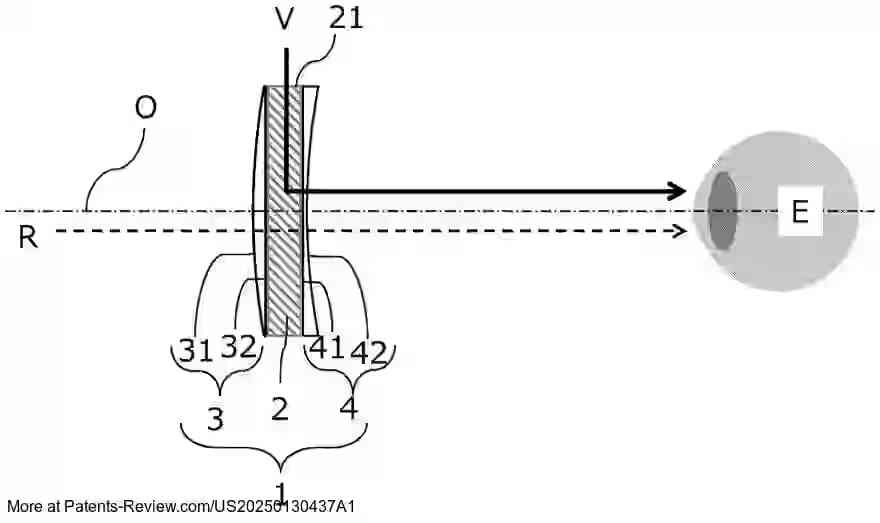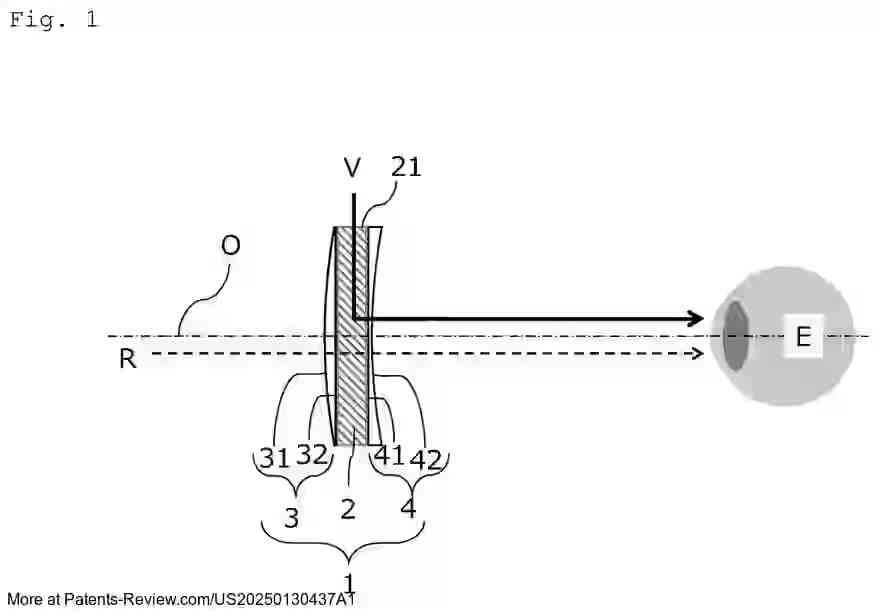SPECTACLE LENS AND SPECTACLES
US20250130437
2025-04-24
Physics
G02C7/068
Inventor:
Assignee:
Applicant:
Drawings (2 of 2)


Smart overview of the Invention
The invention focuses on a spectacle lens designed to enhance the experience of virtual and augmented reality. It consists of an object-side surface, an eyeball-side surface, and a light guide member. The lens includes a first lens element adjacent to the light guide member on the object side and a second lens element on the eyeball side. This configuration allows the lens to form images that reflect both real-world views and virtual content, tailored to the wearer's prescription values.
Technical Field
This development pertains to spectacle lenses and frames that facilitate virtual and augmented reality experiences. Unlike previous technologies that rely on varifocal lenses requiring complex components like liquid crystal or electro-active lenses, this approach uses materials typical of standard spectacle lenses. This innovation aims to make immersive experiences more accessible by utilizing familiar lens materials.
Solutions Proposed
The invention offers multiple configurations to cater to various vision needs. For presbyopic wearers, progressive power lenses are utilized within the first lens element to integrate prescription values. The design allows virtual images formed through light traveling in the guide member to be displayed at a specific distance from the wearer. Additionally, configurations include plus and minus lenses arranged on flat surfaces of the light guide member to maintain clarity and reduce distortion.
Design Variations
- The first aspect includes a progressive power lens in the first element for presbyopic prescriptions.
- The second aspect separates addition power realization between the first and second elements.
- The third aspect uses flat plate-shaped light guides with plus and minus lenses for optimal image formation.
- The fourth and fifth aspects involve plus lenses with functional complex lenses for precise image positioning.
Adaptability and Modularity
The spectacles can incorporate detachable elements, allowing customization for individual wearers' needs. This modularity extends to both the first and second lens elements, which can be interchanged or adjusted within the spectacle frame. Such flexibility ensures that users can adapt their spectacles for different visual requirements or technological advancements without needing entirely new devices.